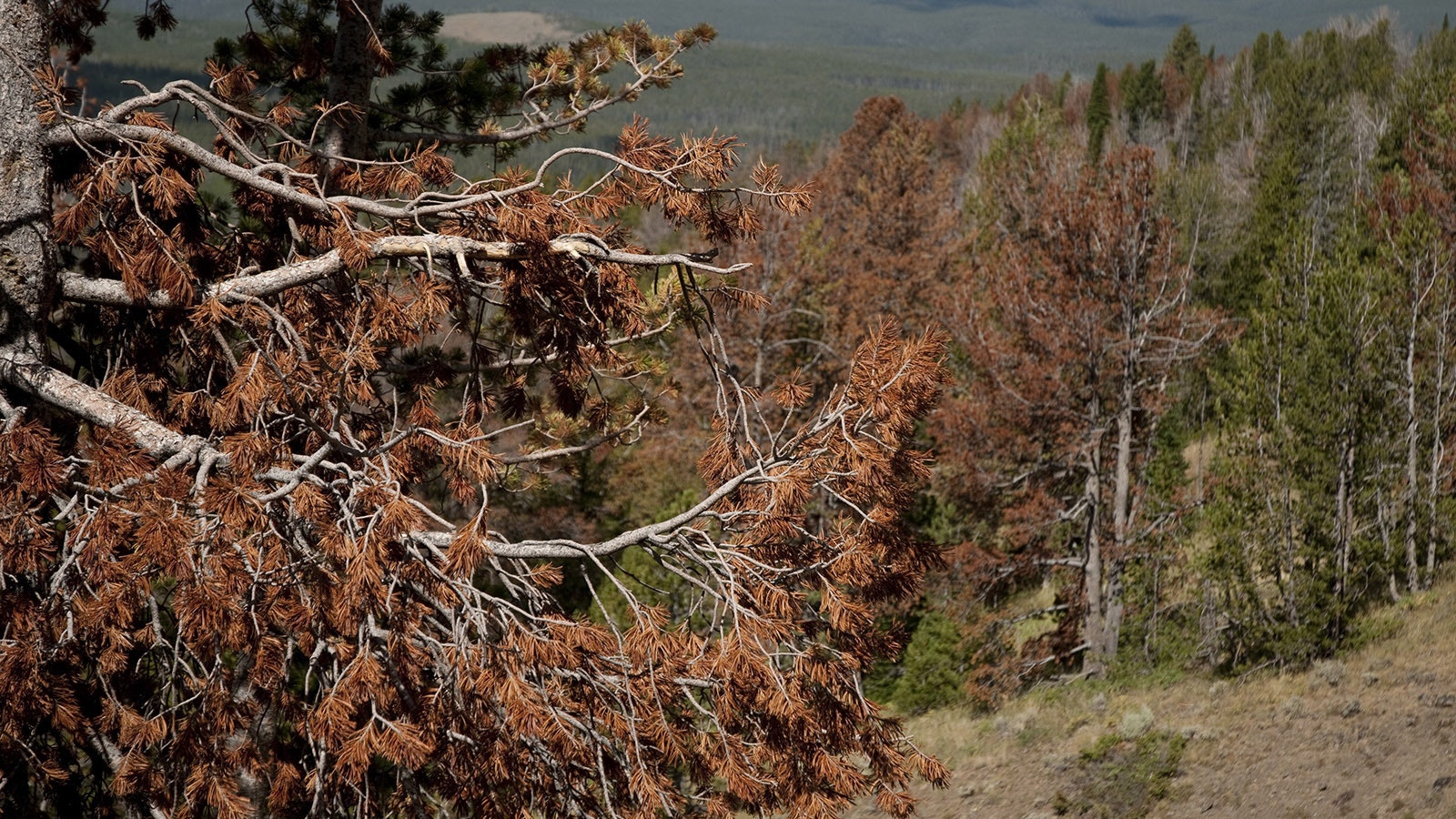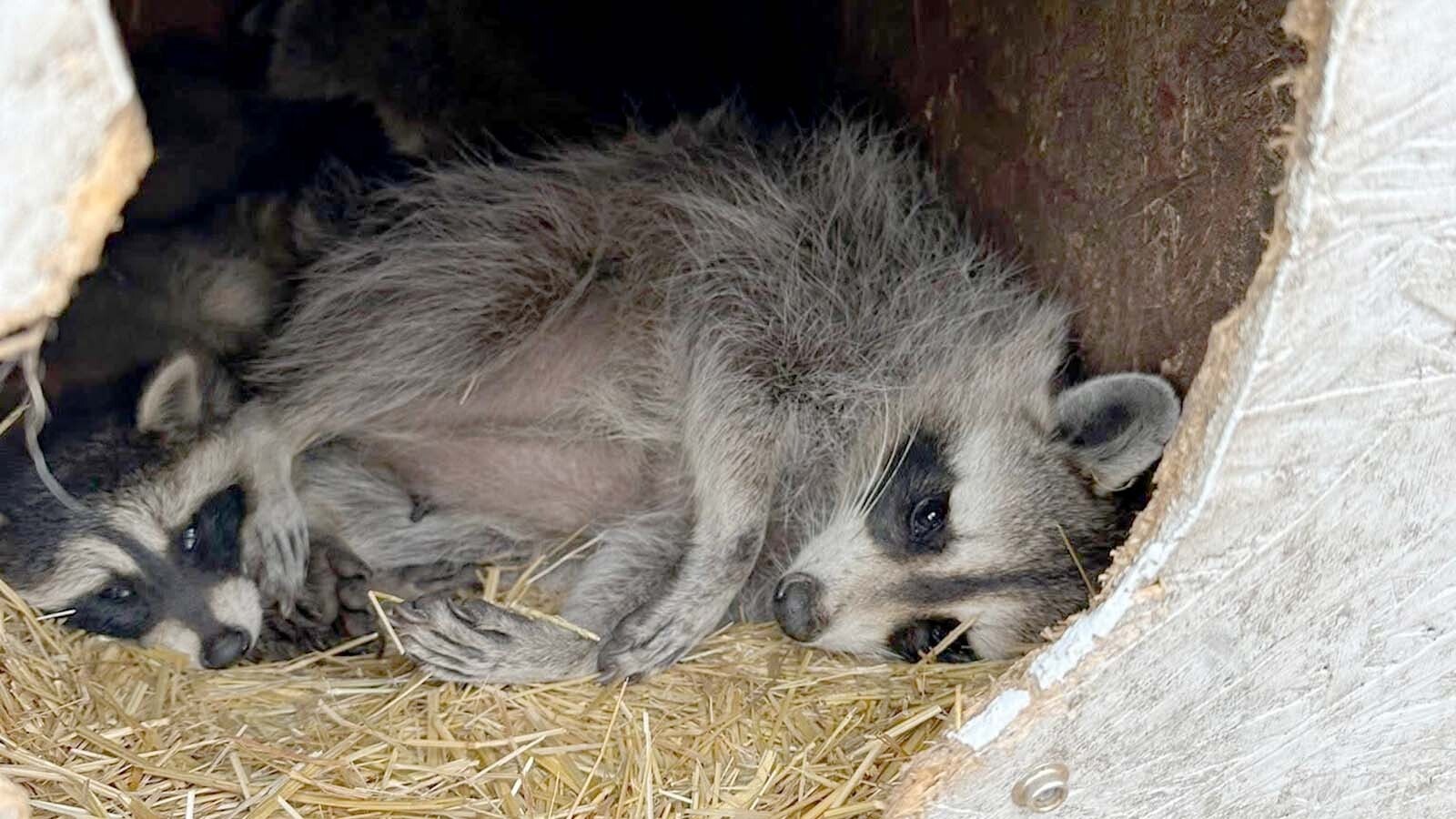A proposed ban on bear-baiting on federal land in Wyoming and other states has rekindled the debate over whether it’s a fair and ethical way to hunt bears.
A coalition of about 70 animal welfare and environmental groups endorsed U.S. House Resolution 4422, the “Don’t Feed The Bears Act of 2025.”
The bill was introduced on July 15 and referred to the House Committee on Natural Resources.
It calls for a ban on hunters using bear-bait barrels to draw in black bears. The practice is legal in 12 states, including 7 where it’s allowed on federal lands: Wyoming, Alaska, Idaho, Michigan, Minnesota, Utah and Wisconsin.
Proponents of the ban say bear baiting doesn’t meet the standards of fair chase hunting – broadly defined as hunting in such a manner that animals have a reasonable chance of escape.
They also claim that baiting involves hauling garbage – often expired or rotten human food – into the outdoors.
However, hunters who use bait argue that it’s an effective and ethical way to hunt bears. They say it gives hunters time to observe bears at close range and avoid such mistakes as accidentally shooting a sow (female bear) with cubs.
It’s also a better way for hunters to find bears and control the population, as opposed to spot-and-stalk hunting, some argue.
Spot-and-stalk hunting involves trying to find bears, usually by using binoculars or spotting scopes, and then figuring the best way to sneak to within rifle or bow range.
Relic Of A Bygone Era?
Bear-bating is a “relic” that doesn’t meet contemporary standards of wildlife conservation and ethical hunting, Wayne Pacelle, spokesman for the Washington, D.C.-based Animal Wellness Action told Cowboy State Daily.
His group is part of the coalition backing H.R. 4422.
“A fair chase notion is really built into the marrow of hunting, and bear-baiting is relic of a time we really looked down on predators,” he said.
In Wyoming and the West, baiting waterfowl and big game animals such as elk and deer isn’t allowed. It’s “generally frowned upon” as going against the standards of ethical hunting established by the North American model of wildlife management, he said.
So, as proponents of HR. 4422 see it, that same standard should be applied to bear hunting, Pacelle added.
“Why do we have this nagging exception for baiting bears?” he said.
Bear-baiting is already forbidden in Montana and other states in the West, so a nation-wide ban – at least on federal lands – is in order, he said.
It can also be argued that hunters setting out bait barrels during spring and fall bear hunting seasons amounts to feeding bears, Pacelle said.
“All the federal land management agencies have very strict standards against feeding bears,” he said.
“Food-conditioned bears” can lead to human-bear conflicts, he said.
Moreover, during the fall, bears are in a pig-out stage called hyperphagia, when they’re trying to cram down calories and pack on fat for winter hibernation, Pacelle said.
Bear bait stations can make it unnaturally easy for black bears to fatten up, which in turn can put their reproductive capacity into overdrive, he said.
“Then you’re on a treadmill of creating more bears, so you can shoot more bears,” he said.
Pacelle claimed that banning bear-bating wouldn’t ruin hunting.
In states where it’s forbidden, such as Pennsylvania, bear hunters are still highly successful, he said.
Hunters Say Baiting Prevents Mistakes
Avid bear hunter and northeast Wyoming resident Owen Miller pushed back against claims the bear-baiting is unethical.
As he sees it, using bait can lead to better, more ethical decisions regarding which bears to shoot.
“It actually gives you a chance to look over a bear before you decide to shoot it,” he said.
While he understands that the concept of baiting bears might upset some people who thinks it’s unfair, Miller said it can help prevent terrible mistakes.
Such as shooting a female bear, only to realize that she had cubs nearby.
Spot-and-stalk hunting might provide only a brief moment for a hunter to decide whether to take the shot, Miller said.
And even for seasoned hunters, it can be difficult to quickly distinguish between male and female bears.
Females tend to have thinner snouts and less-robust bodies than males, but sometimes it takes a long while watching a bear to discern that, he said.
Sitting in a blind over a bait barrel gives hunters the opportunity to scrutinize each bear that comes in, Miller said.
He likes to hold out for only the largest male bears before taking a shot.
He recalled that on more than one occasion a large bear came rumbling into his bait site – only to turn out to be a female. And followed a short time later by her cubs – which were hanging back under cover.
In spot-and-stalk hunting, there’s a greater chance a hunter might not realize a bear has cubs until it’s too late, Miller said.
When baiting, “you have time to see if it has cubs. Nobody wants to shoot a sow with cubs,” he said.
Miller said he takes it a step farther at his bait sites. He’ll spray water mixed with peanut butter flavoring or some other tempting treat into the lower branches of trees.
“It gets the bear to stand up on its hind legs to try figuring out where the scent is coming from, so you can see its plumbing,” Miller said.
He said spot-and-stalk hunting sometimes affords fewer opportunities to see bears in Wyoming’s vast landscapes.
“How can you control a bear population if you can’t see them?” Miller said.
Mark Heinz can be reached at mark@cowboystatedaily.com.








